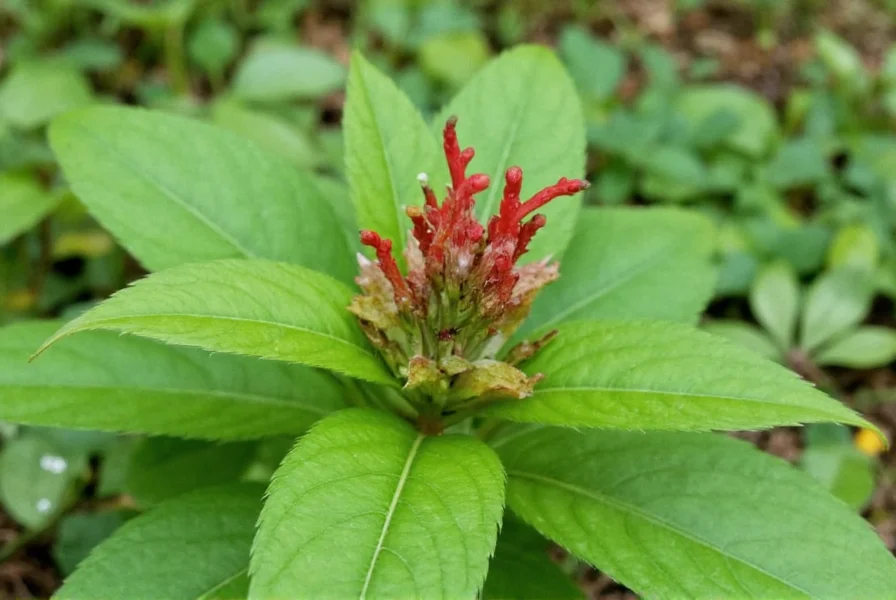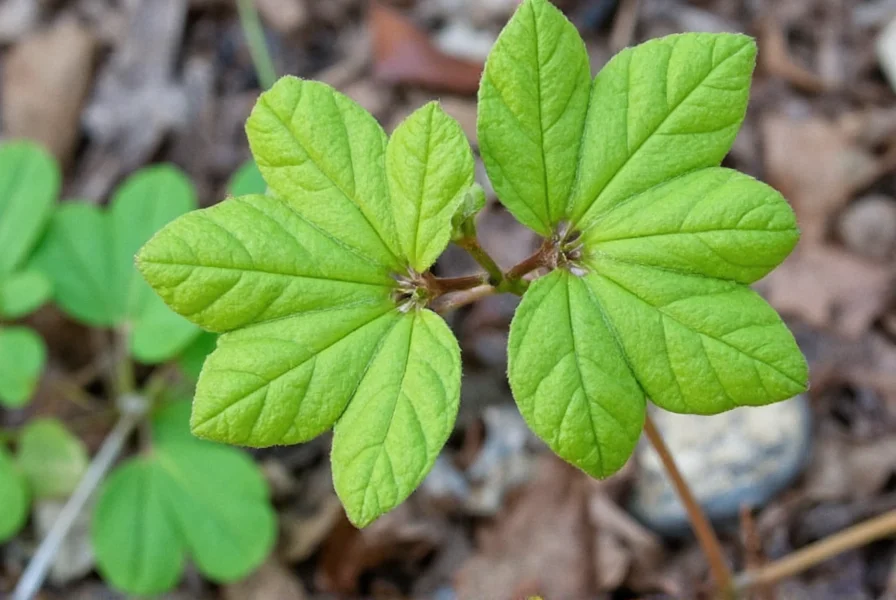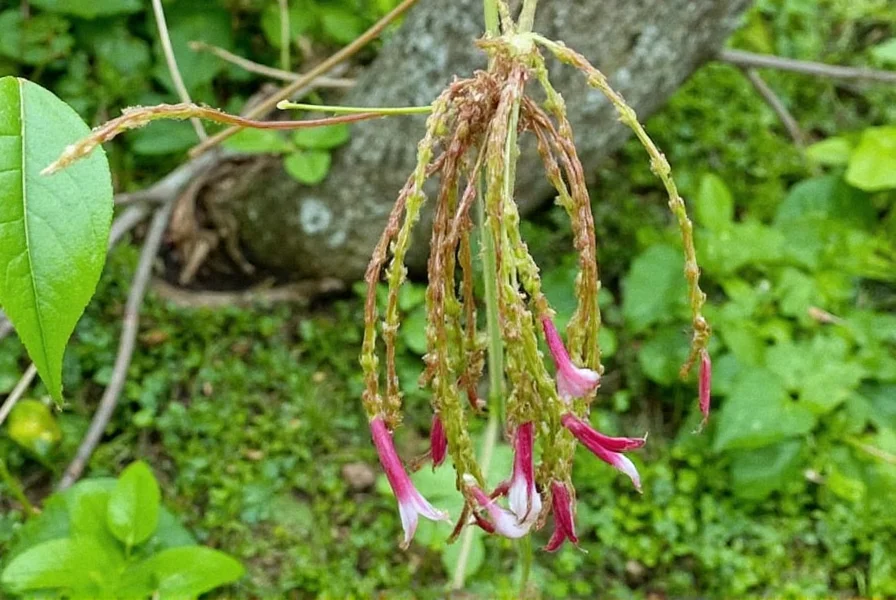Native to eastern North America, wild ginger thrives in the shaded, moist environments commonly found in South Jersey's forested areas. In Sicklerville specifically, this plant flourishes in the region's characteristic oak-hickory woodlands where leaf litter creates the nutrient-rich, well-drained soil it requires. The USDA hardiness zone 7a climate of Sicklerville perfectly aligns with wild ginger's temperature requirements, allowing it to establish healthy colonies in appropriate habitats.
Understanding Wild Ginger in South Jersey Ecosystems
Wild ginger (Asarum canadense) is a low-growing perennial that forms dense ground cover in forest settings. In the Sicklerville area, it typically appears in early spring with distinctive heart-shaped leaves that reach 4-8 inches in diameter. The plant produces small, maroon flowers close to the ground that are often hidden by foliage, making them difficult to spot without careful observation.
Unlike its culinary namesake, wild ginger contains aristolochic acids and should not be consumed. However, it plays a vital ecological role in local ecosystems by preventing soil erosion and providing habitat for native insects. The plant spreads through rhizomes, creating extensive colonies that can cover significant forest floor areas in optimal conditions.
Habitat Requirements for Wild Ginger in Sicklerville
Sicklerville's unique environmental conditions determine where wild ginger successfully establishes. The following table outlines the specific habitat requirements and their prevalence in the Sicklerville area:
| Habitat Factor | Wild Ginger Requirement | Availability in Sicklerville |
|---|---|---|
| Soil Type | Moist, well-drained, rich in organic matter | Abundant in forested areas with leaf litter |
| Light Conditions | Partial to full shade | Widespread in local deciduous woodlands |
| Moisture Level | Consistently moist but not waterlogged | Common near streams and in low-lying areas |
| pH Level | Slightly acidic to neutral (5.5-7.0) | Naturally occurring in local soil conditions |
Identifying Wild Ginger in Sicklerville Woodlands
When searching for wild ginger in the Sicklerville area, look for these key identification features:
- Leaves: Heart-shaped, velvety texture, 4-8 inches wide, arranged in pairs
- Stems: Short, hairy, connecting leaves to underground rhizomes
- Flowers: Maroon to purple-brown, bell-shaped, growing close to soil surface
- Scent: Crushed leaves emit a mild ginger-like aroma (hence the name)
- Height: Typically 4-10 inches tall
Be careful not to confuse wild ginger with similar-looking plants such as Canadian wild ginger (Asarum canadense) which is the same species, or the invasive European ginger (Asarum europaeum) which has different leaf patterns and growth habits. The presence of wild ginger often indicates a healthy, undisturbed forest ecosystem in the Sicklerville region.

Conservation Status and Ethical Foraging Considerations
While wild ginger remains relatively common in suitable Sicklerville habitats, it faces threats from habitat loss and invasive species. The plant grows slowly and takes years to establish substantial colonies, making it vulnerable to over-harvesting. Many local conservation areas in and around Sicklerville protect native plant communities including wild ginger populations.
If you're exploring wild ginger locations in Sicklerville, remember these important guidelines:
- Never remove plants from public conservation areas
- Take only what you need if harvesting on private property with permission
- Avoid disturbing the rhizome system when collecting small samples
- Consider photographing rather than collecting specimens
- Report significant populations to local conservation groups
Related Native Plants in Sicklerville Woodlands
Wild ginger typically grows alongside other native plants that share similar habitat requirements. In Sicklerville woodlands, you'll often find these companion species:
- Trillium species (Trillium grandiflorum)
- Jack-in-the-pulpit (Arisaema triphyllum)
- Mayapple (Podophyllum peltatum)
- Virginia bluebells (Mertensia virginica)
- Woodland phlox (Phlox divaricata)
This plant community creates a vital spring ephemeral layer that supports local pollinators and contributes to the overall biodiversity of Sicklerville's forest ecosystems. The presence of wild ginger often indicates a mature, healthy woodland that has remained undisturbed for many years.

Resources for Learning More About Sicklerville's Native Plants
Several local organizations provide valuable information about wild ginger and other native plants in the Sicklerville area:
- Winslow Township Environmental Commission
- Camden County Parks Department
- South Jersey Land Trust
- Rutgers Cooperative Extension of Camden County
- New Jersey Audubon Society chapters
These organizations often host guided nature walks during spring when wild ginger and other native plants are most visible. They also provide educational materials about proper identification and conservation practices specific to the Sicklerville region.
Can I legally forage wild ginger in Sicklerville?
Foraging wild ginger on public lands in Sicklerville is generally prohibited without specific permission. On private property, you must obtain the landowner's consent. Many conservation areas strictly prohibit plant removal to protect native ecosystems. Always check local regulations with the Winslow Township Environmental Commission before foraging.
Is wild ginger the same as culinary ginger found in Sicklerville?
No, wild ginger (Asarum canadense) is not the same as culinary ginger (Zingiber officinale). While wild ginger has a mild ginger-like scent when crushed, it contains aristolochic acids and should not be consumed. Culinary ginger does not grow wild in New Jersey and must be cultivated. Never substitute wild ginger for culinary ginger in recipes.
When is the best time to see wild ginger in bloom in Sicklerville?
Wild ginger typically blooms in early spring (April to May) in the Sicklerville area. The maroon flowers appear before or with the leaves and are often hidden beneath the foliage near the soil surface. The best time for viewing is during moist spring days when the forest floor is shaded but not completely dark.
How can I help conserve wild ginger populations in Sicklerville?
You can help conserve wild ginger by staying on designated trails when hiking, avoiding trampling plants, never removing plants from natural areas, reporting invasive species to local authorities, participating in native plant restoration projects, and educating others about the importance of native plant conservation in the Sicklerville region.
Where are the best locations to observe wild ginger in Sicklerville?
Wild ginger can be found in several protected woodland areas throughout Sicklerville, particularly in moist, shaded forest areas near streams or in low-lying regions with rich soil. Some public areas known for native plant populations include the Atco Lake Park woodlands, the Winslow Township Nature Preserve, and sections of the Pinelands National Reserve that extend into the Sicklerville area.
Additional Resources for Sicklerville Plant Enthusiasts
For those interested in learning more about wild ginger and other native plants in the Sicklerville area, consider these resources:
- Wildflowers of New Jersey's Pine Barrens by John T. Kartesz
- Rutgers New Jersey Agricultural Experiment Station publications
- Native Plant Society of New Jersey field guides
- Seasonal plant walks offered by local environmental organizations
- Online databases like iNaturalist for documenting local plant sightings











 浙公网安备
33010002000092号
浙公网安备
33010002000092号 浙B2-20120091-4
浙B2-20120091-4